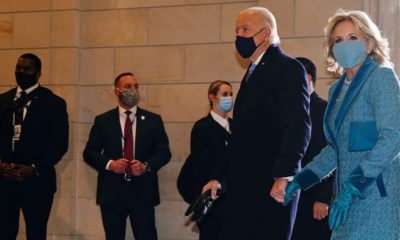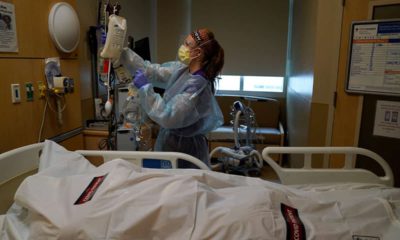Published
5 years agoon

Students at California public schools might have to wear face masks and have their temperature taken each morning before they walk on campus, their classrooms might hold only 10 to 15 students, and they might be on campus only a couple of days each week.
The need to keep students and school staff safe during the COVID-19 pandemic means that when schools reopen in August and September, they’ll look a lot different than before.
The California Department of Education on Monday issued guidance for the state’s 1,000 public school districts that outlines recommendations for student scheduling, health and safety, bus transportation, and also identifies instructional programs for students with special needs and those wh0 are English language learners.

Superintendent of Public Instruction Tony Thurmond
Tony Thurmond, the state’s superintendent of public instruction, said the 55-page “Stronger Together: A Guidebook for the Safe Reopening of California’s Public Schools,” is intended to provide guidance to locally controlled school districts.
District trustees will make the final determination of what their schools will look like, working in conjunction with county public health officials, he said.
“Safety first is our top priority,” Thurmond said Monday morning at a news conference.
What the guidebook does not spell out is how districts will cover the costs of providing education that could be a hybrid of in-classroom and at-home learning.
Thurmond said Gov. Gavin Newsom and legislature, faced with sharp declines in state revenues, are at odds about how to fund schools, with the legislature restoring money that Newsom had sliced in the May budget revision.
The state will also need to adjust how money is appropriated to schools, since the per-student average daily attendance formula may not be as relevant in the coming school year, he said.
Some of the higher costs schools face include providing personal protective equipment for staff and students, but Newsom on Friday committed the state to paying for that, Thurmond said.
What California and the nation’s other 49 states need is for Congress to boost education funding, including covering the costs of school meals, he said.
[rlic_related_post_one]Most school districts in the state shifted to distance learning after schools closed in March, and many parents who are concerned about the risk of infection are clamoring for that option for the upcoming school year, Thurmond said.
That could help schools accomplish social distancing goals of keeping students at least 6 feet apart, he said.
But school districts may consider other schedules such as staggering start times, having younger children be in school on two days and older children on two other days, with Fridays as a distance learning day for students and a professional development day for teachers.
Districts may target younger students, English language learners, and others for more in-classroom instruction.
Schools also can be creative with space, such as scheduling classes in gymnasiums or cafeterias, or even outdoors when the weather permits, Thurmond said.
Nancy Price is a multimedia journalist for GV Wire. A longtime reporter and editor who has worked for newspapers in California, Florida, Alaska, Illinois and Kansas, Nancy joined GV Wire in July 2019. She previously worked as an assistant metro editor for 13 years at The Fresno Bee. Nancy earned her bachelor's and master's degrees in journalism at Northwestern University's Medill School of Journalism. Her hobbies include singing with the Fresno Master Chorale and volunteering with Fresno Filmworks. You can reach Nancy at 559-492-4087 or Send an Email



Tulare County Gang Member, Two Fresnans Head to Federal Prison


Study: First 10 Days After Leaving Hospital Pose Deadly Risks for COVID Patients


California Pins Vaccine Hopes on Biden Administration


Bay Area Restaurants, Wineries File Lawsuit Over Outdoor Dining Ban


Madera Hospital, With ICU Inundated, Transfers Patients to Other Facilities


‘Shameful’: US Virus Deaths Top 400k as Trump Leaves Office



